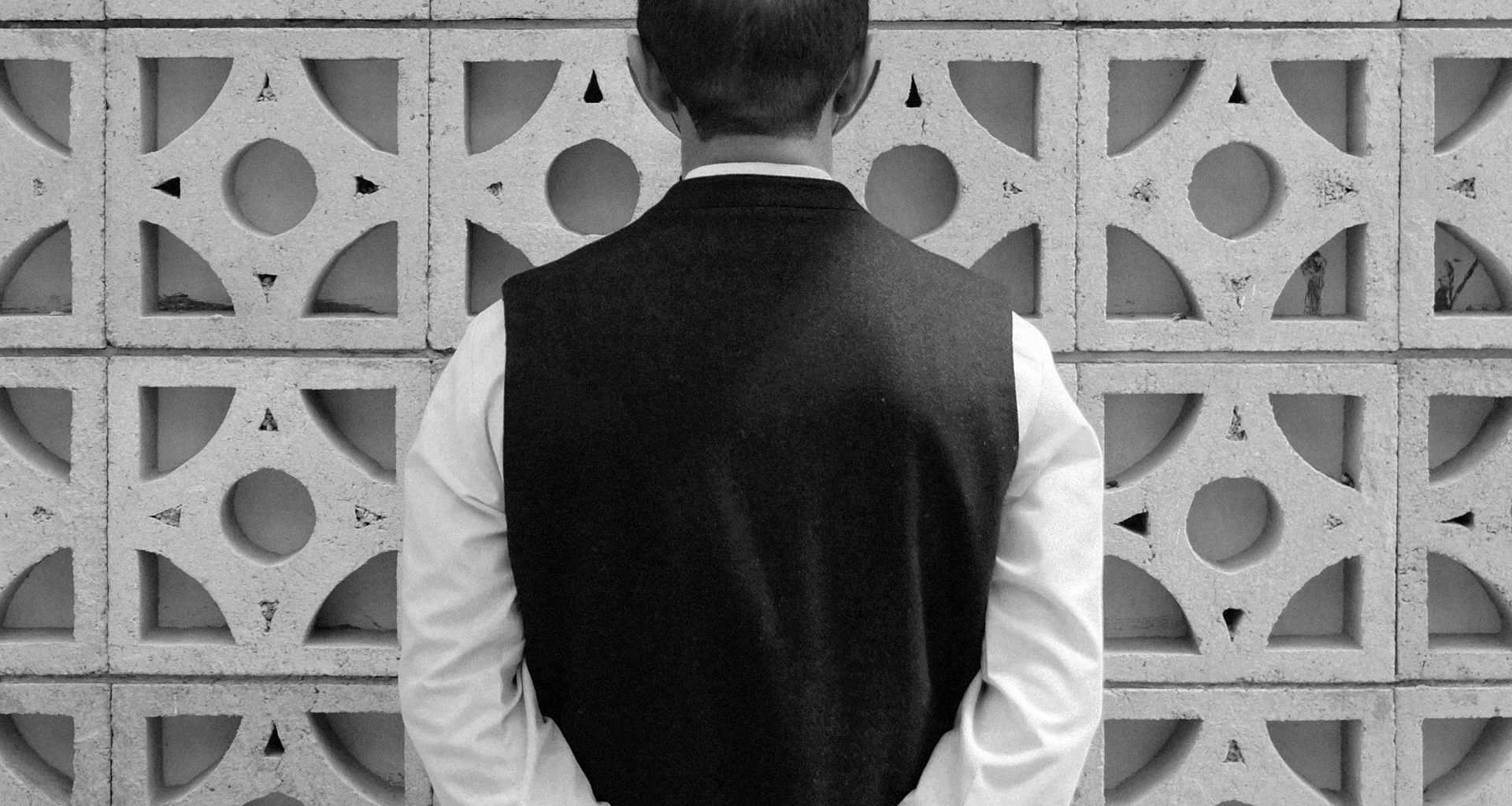It is easy to come to the conclusion that Mohammad Sharaf (37) is an exceptional designer. His poster series “Visual Reactions” catapulted him to international recognition in 2011, where he used satire to react to his immediate environment. The series not only went viral but was showcased in exhibitions worldwide—from Kuwait and Khobar to London and New York. The poignant series displayed Sharaf’s willingness to brave a tumultuous and sometimes overly-critical community by creating resonating posters that act as a mirror to social ills. “Full disclosure,” Sharaf explains, “a lot of my art is critical and cynical.”
His famous “Visual Reactions” series came from an interesting source, a university assignment asking students to design a typographic poster about the city they are from entitled, “My City, My Place.” A project with the simple aim of asking students to create charming and nostalgic poster about their native city. However, Sharaf challenged the project by changing the premise entirely. “I decided to do a typographic poster about the thing I hate most about my city. It was how we talk, discuss, and preach everything without knowing enough about what we’re preaching. […] I created a poster and I called it ‘This is how it goes’.”
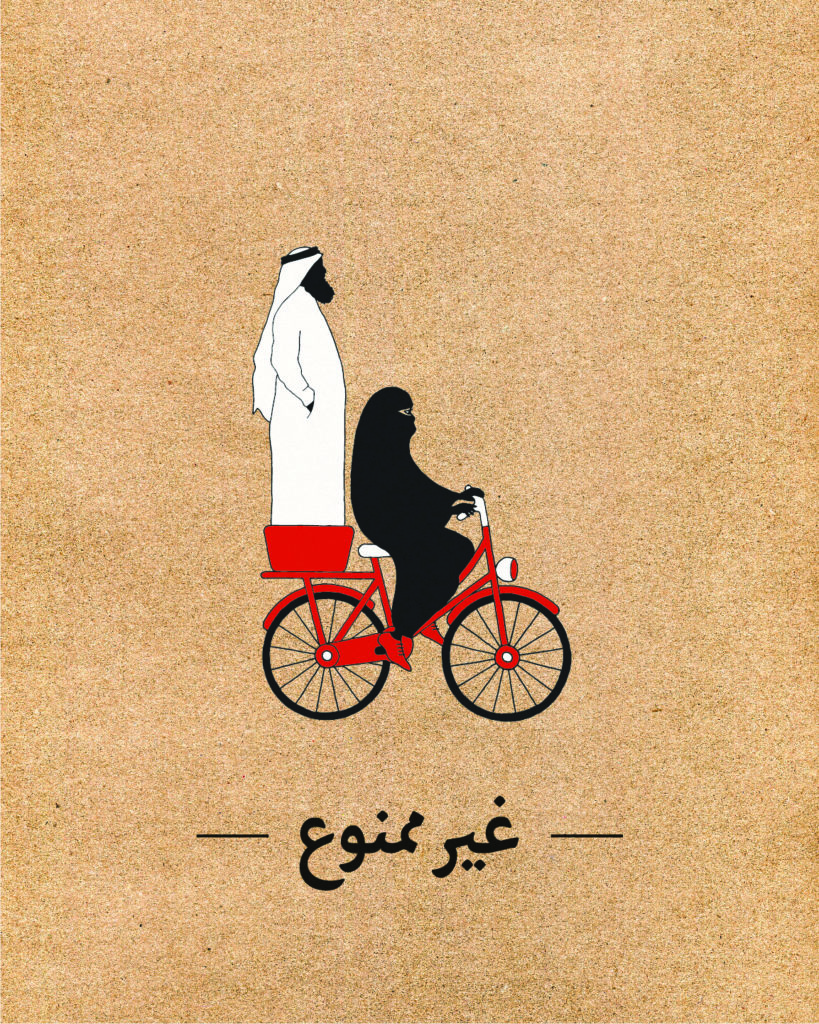
A simple assignment became the launching pad for Sharaf’s artistic career. Not long after, Sharaf created more posters under the same concept that shaped what we have now come to know as his inimitable perspective. In particular, his creations that carry a socio-political resonance are playful, witty, bold, but most of all eloquent. It is no simple feat to convey a critical message without inciting a wave of negative feedback, especially in an Arab world shaken by political upheavals. His use of illustrations and typography does not only amplify his message like a figurative megaphone, it also honors design and typography as an instrument of effective communication.
“Typography is a great aspect of graphic design,” he disclosed, “it explains things, it shows things, it guides things, and it’s the perfect way to illustrate a spoken word into writing. For me, typography illustrates things that everyone can read, in a visually-enhanced way.”
Sharaf’s love for the strong bond between text and form is evident in his daily practice. He expresses that he absolutely loves lettering and drawing type. “It happens often that I stop whatever I am working on to work on something related to drawing letterforms,” he elaborates. He expressed that his fascination lies in how even the most subtle of details contribute to the entirety of the message. This is demonstrated in the multitude of design-work he has created relating to typography and print, including his illustrations under ‘Saudi Women to Drive,’ which were displayed in Loud Art Exhibition at Desert Designs in Alkhobar, in 2013. He also created a brilliant series using a method he likes to call “digital vandalisation.” For this series, Sharaf photoshopped empty billboards with his artwork and broadcasted them on social media and via WhatsApp. Again through his witticisms, he commented on societal issues he would like to draw attention to.
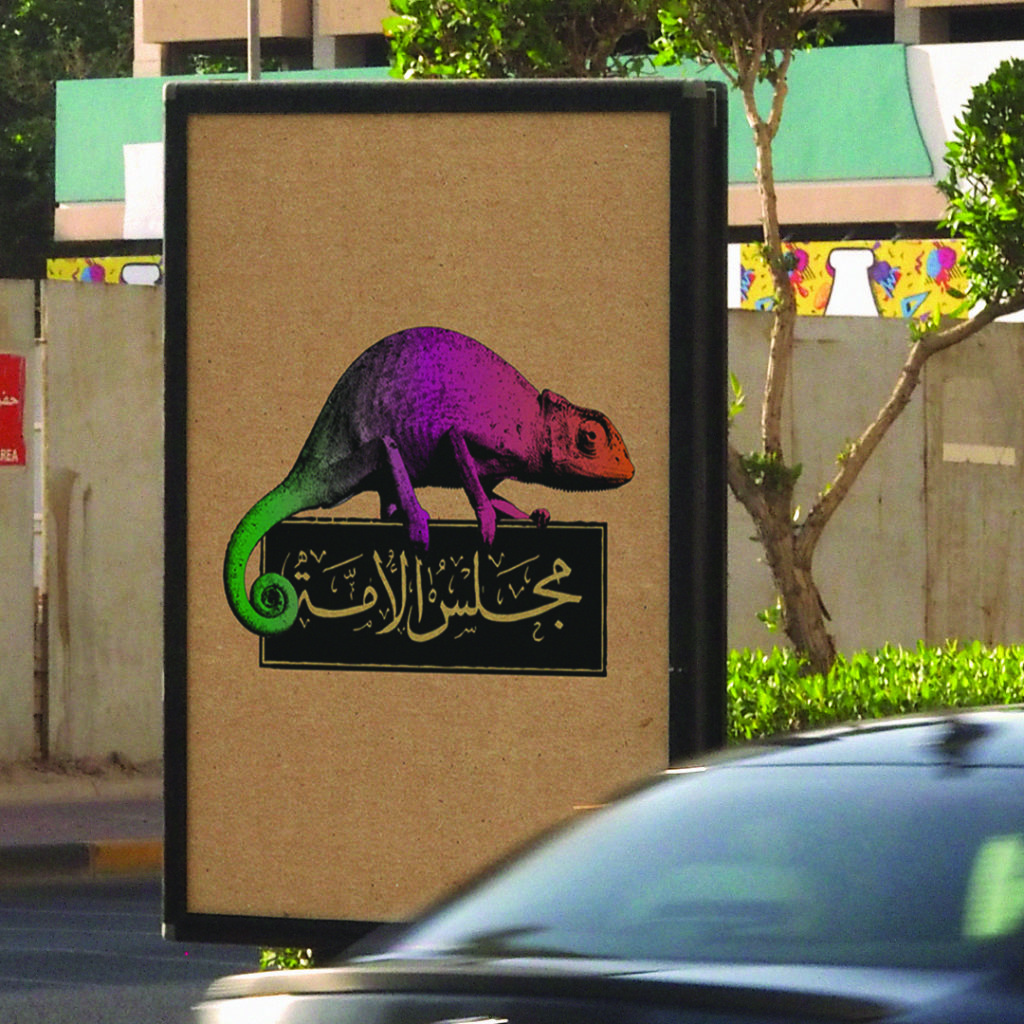
Sharaf, however, is not a person to be limited by labels or a particular medium. Although print is his first love, his design work remains malleable and adaptable to the very notion of the work he creates, the audience he would like to reach, and the platform in which he would like to present. An ideal example of his adventurism is Sharaf’s widely known installation, “The Cemetery of Banned Books in Kuwait,” which was erected in November 2018 to coincide with The Annual Kuwait International Book Fair. The installation was a response to the recently published list of over 4,300 books banned by the government in Kuwait that surfaced on Twitter. It was composed of books placed to emulate gravestones in a cemetery. Each gravestone donned a hand-written title placed on top of a sequence of numbers representing the year the books have been banned. This time-appropriate intervention hit the mark. And much like his previous work, not only initiated a much needed conversation, but had an immediate effect that rippled beyond his usual following.
“I got many reactions. To start with, the management of The International Kuwait Fair Company removed the installation in three hours, so that’s one reaction. It was expected, but much faster than I thought,” he professed.
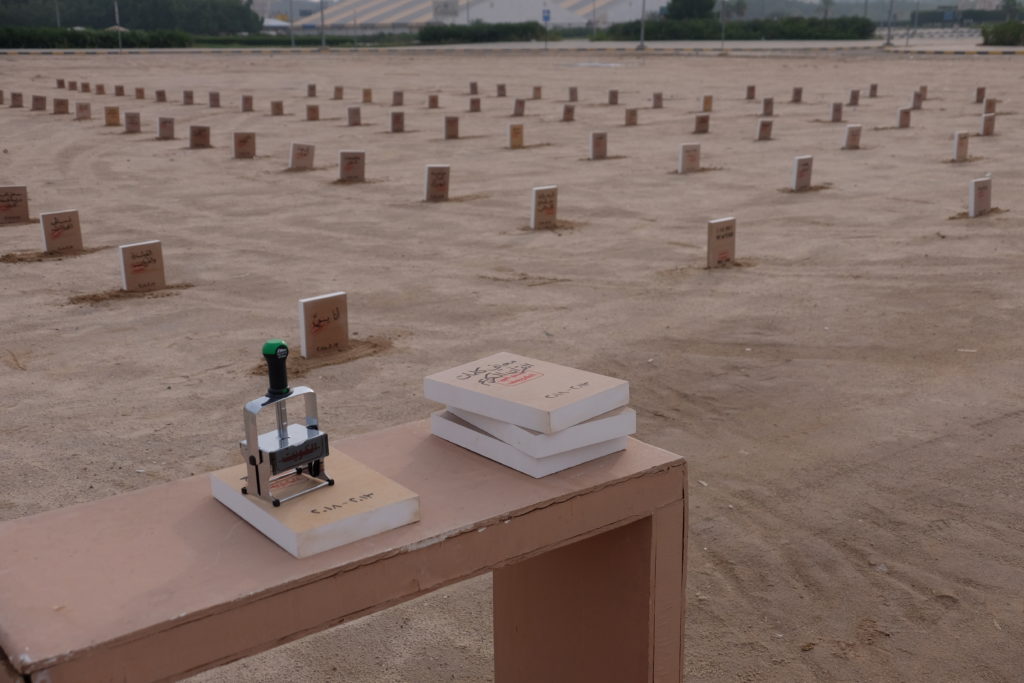
His phone did not stop ringing, and notifications lit up the device for over 48 hours after putting up the installation. On social media, he received a varied spectrum of reactions. Retweets, likes, and reposts were escalating by the minute. Most of the responses were in favor of the cause and the methodology of his silent protest, and how he delivered his message. “The installation got attention from local and international news outlets. It went straight to local newspapers’ first pages right next day. I was interviewed by Euro News, The Daily Heller, HyperAllergic, The Art Newspaper, and a few other international media outlets [that] wanted to interview [me] in person and show me talking about the work… [But] I wasn’t interested in that—I thought, this will draw the attention to me as a person or as a face rather than the work itself.”
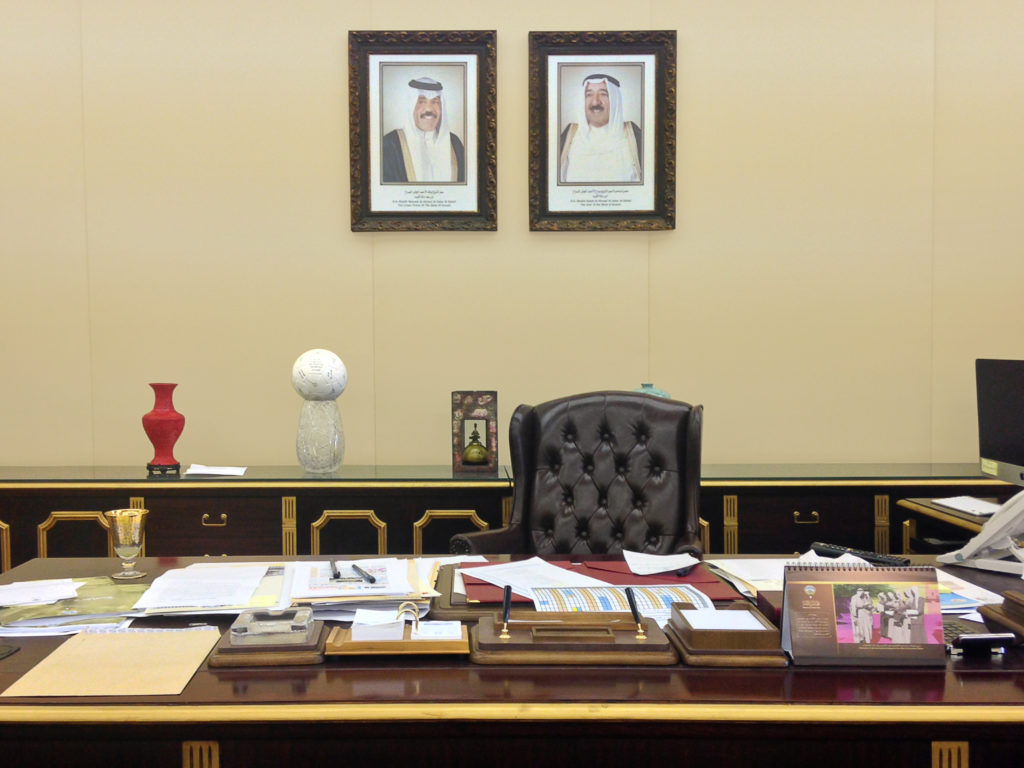
On that note, we see Sharaf in his true colors. Humble regardless of his talent, and someone that prioritizes the integrity of his art rather than his personal image. He stresses, “I do believe that one should use the tools that they have and excel at to make things better.” His attitude towards his discipline stems from his time in New York. In 2013, he moved to New York to do his MFA in Design at the School of Visual Art. There he was taught by the likes of Steven Heller, Allan Chochinov, and Stefan Sagmeister, whom he attributes learning the valuable skill of creating and using design to touch people’s heart. “Create things that actually make sense,” Stefan said to him one day in class. Under his tutelage, Sharaf created a project based on the Kuwaiti Speaker of the House of Parliament at that time, Mr Marzouq Al-Ghanim. He was chosen because he was ambitious, young, and willing to make a difference. To highlight Mr. Al-Ghanim, who is a big football fan and a former president of a major football club in Kuwait, Sharaf chose a football to be the item he utilizes to connect with the Speaker and touch his heart. He picked the outcomes of the national referendum and illustrated them like a coach’s game-plan strategy board. “After all, politics is a game,” Sharaf explains, “The ball sits now at Mr Al-Ghanim’s office at the parliament. I remember him saying 'It is actually pretty damn good'.”
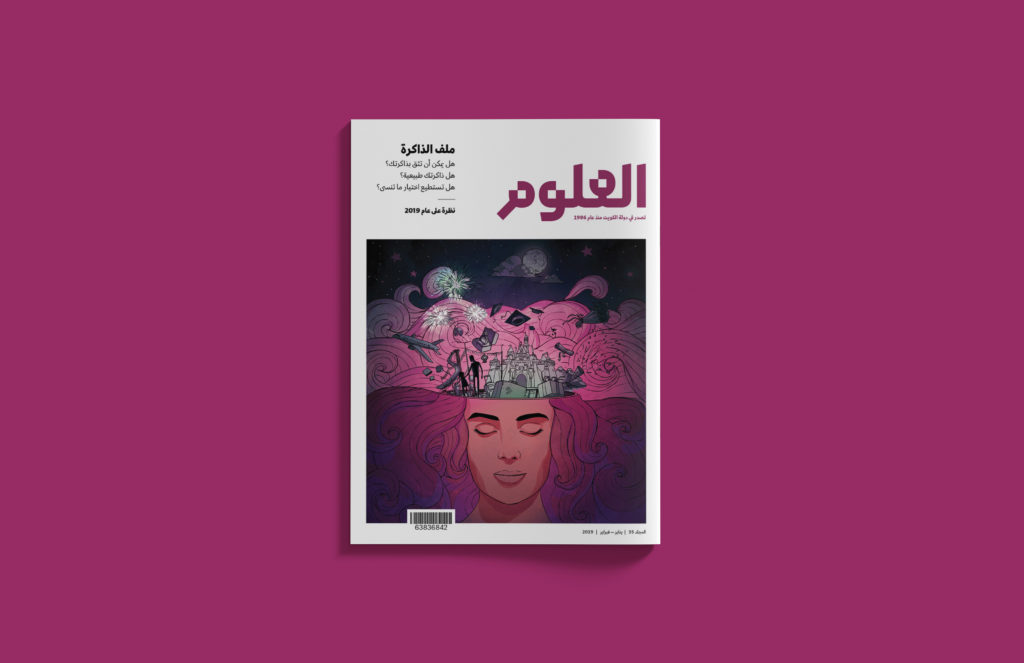
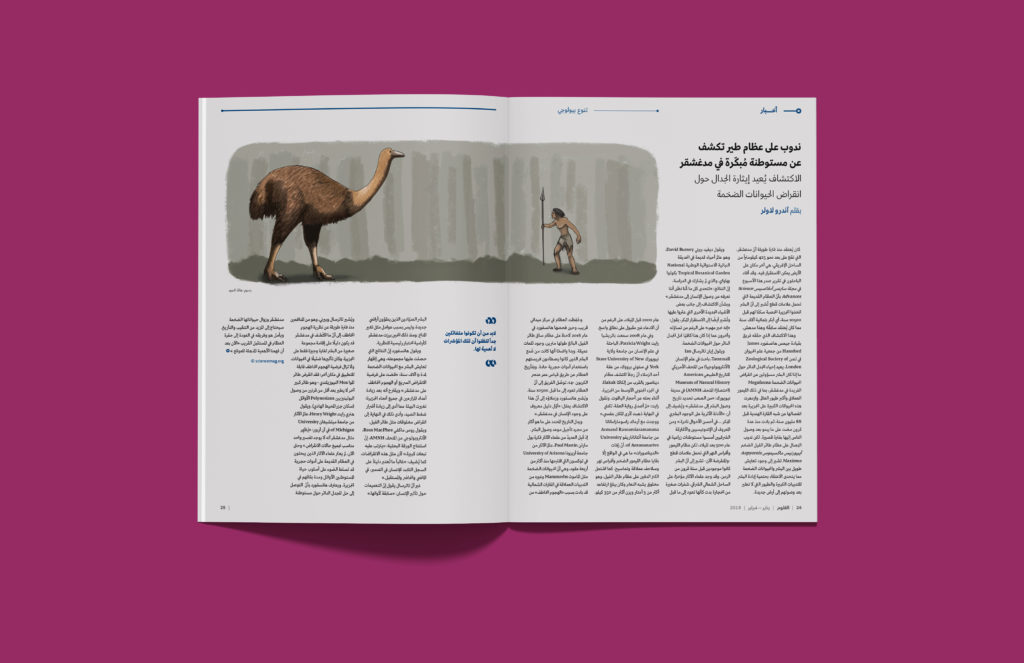
Five years later, Sharaf finds himself settled back in Kuwait, and he says that he couldn’t be more excited. After over twenty years of freelance work, he has established his own design agency, Sharaf Studio.
For aspiring creatives in the Arab Gulf, Sharaf’s journey is an inspirational one. When asked about what it is like being a creative entrepreneur, Sharaf explains, “On one side, you get to work on bigger-scale projects and more rewarding ones. On another side, it’s a tougher responsibility.” Of course, as with any business, there are myriad of tasks one has to face on a daily basis regarding hiring, collaboration, commissions, consultations, and the like. But Sharaf seems to be enjoying it, much like his process manifesting the aforementioned artworks, his practice will always open doors for him, because to him design is more than aesthetics, it is a tool for making the world a little better.
"I want to be able to make Sharaf Studio financially stable, to produce good work that matters, and to find a way to contribute back to the community. I want to elevate the common knowledge of graphic design locally. I want to share knowledge and resources.” he explains. And there is no doubt that he will.
A version of this article was featured in Khaleejesque’s Tenth Anniversary, March 2019 issue.
Words: T. Khalifa
Images: Mohammad Sharaf, Muneera Alyahya

